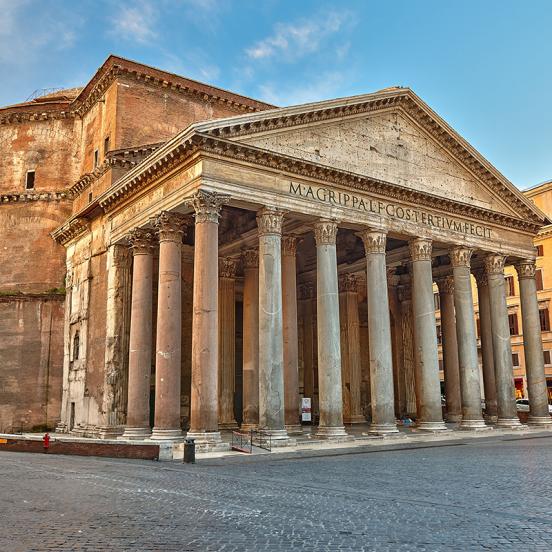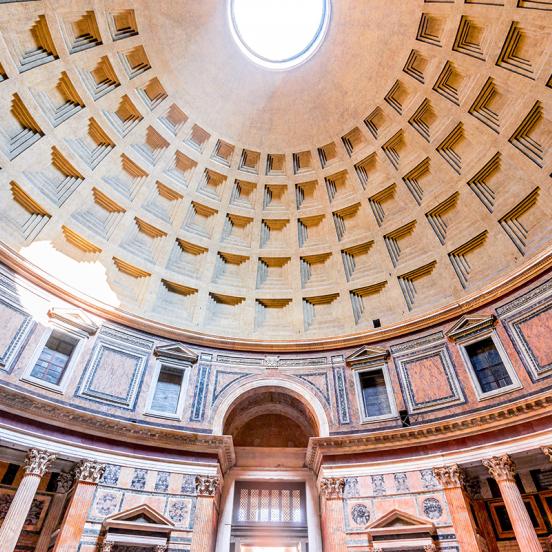Pantheon
One of the most famous buildings in the city of Rome is the Pantheon, which was built around 125-128 during the reign of emperor Hadrian (117-138). The name Pantheon was first mentioned in the books about the history of Rome by Dio Cassius: “It has this name, perhaps because it received among the images which decorated it the statues of many gods, including Mars and Venus.” He adds: “But my own opinion of the name is that, because of its vaulted roof, it resembles the heavens.” (Trans. E. Cary and H.B. Foster, 1917.) Regarding its function, it was a cult building. However, there are no data about the cult of which god or gods it served. This is the best preserved Roman building, which has survived almost intact, known today. One of the reasons is that later it functioned as a Catholic church. It is mostly due to its excellent, stable structure that it stands after nearly 1900 years. From the front, looking at the main façade, the columned porch gives the appearance of a traditional Graeco-Roman temple. In Antiquity bronze ornaments – presumably an eagle with its wings spread and a wreath – were fixed in the triangular tympanum. Entering the Pantheon the striking interior opens up: the rotunda covered with colourful marble is covered by a huge, coffered hemispherical dome, which lets in light only through a central opening. The dome with its diameter of 144 Roman feet (43.2. metres) is an impressive architectural achievement: prior to the 20th century there was no larger dome built of concrete in the world.


